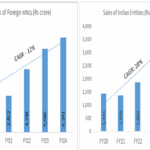Suspend outdoor activities for few days and take precautionary measures to combat adverse effects
New Delhi, November 8, 2017: The air quality in Delhi has hit an all-time low with the air quality index of the city shooting up to 451 on a scale where the maximum level is 500. Inhaling this air can be equated to smoking 50 cigarettes a day and is detrimental to healthy individuals and those with existing health conditions alike! As per the IMA, this is a public health emergency as the city has practically turned into a gas chamber.
Smog is a result of a combination of factors such as industrial activities, vehicular traffic, open burning, incinerators, higher temperature, geography of a place, sunlight, and calmer winds. Smog occurs in a location that is far from the source of pollution. This is because the process that leads to smog occurs after the hazardous particles have been drifted away by the wind.
Speaking about this, Padma Shri Awardee Dr K K Aggarwal, National President Indian Medical Association (IMA) and President Heart Care Foundation of India (HCFI) and Dr RN Tandon – Honorary Secretary General IMA in a joint statement,said, “Smog is a complex mixture formed by various pollutants such as nitrogen oxides and dust particles, which interact with sunlight to form ground-level ozone, leading to the build-up of haze that hangs in industrial cities. This is a high-alert situation for the city with children and older adults at high risk. Those with lung disorders and breathing issues are also highly vulnerable to the ill effects of this condition. Air pollution is responsible for 3,000 premature deaths in Delhi every year which works out to 8 deaths a day. Also, one in three Delhi kids has reduced lung function and high propensity for increased pulmonary hemorrhage due to the high pollution levels. It is recommended to take precautions for the next few days by staying indoors and not venturing out for exercises or walks.”
The IMA has already appealed to the chief minister of Delhi to issue an advisory for all schools in Delhi-NCR, to be disseminated through different media such as radio, print and social media. They have also requested for the cancellation of the Airtel Delhi Half Marathon scheduled on the 19th of November.
Adding further, Dr Aggarwal, said, “Whenever the humidity is high air movement is less and the temperature is low fog is the automatic choice. It reduces visibility and more accidents are reported on the roads and delay in both railway and airlines services. When the level of pollution is high in the atmosphere the pollutant particles get mixed into the fog reducing its visibility further and the resultant is called as smog. Smog is very dangerous to both lungs and the heart. High sulfur dioxide contents lead to precipitation of chronic bronchitis. High nitrogen dioxide contents lead to precipitation of asthma. High particulate matter PM10 air pollutants sized between 2.5 to 10 microns can damage the lungs and precipitate asthma due to air flow and inflammation. High contents of particulate matter PM 2.5 air pollutants less than 2.5 micron in size can enter the lungs and damage the lung lining. They can also be absorbed and cause inflammation of the heart arteries.”
Some tips to cope with the increased pollution levels.
- Patients with asthma and chronic bronchitis should get the dose of their medicine increased during smog days.
- Avoid exertion in conditions of smog. It is better to avoid walking during smog hours.
- Drive slowly during smog hours.
- Heart patients should stop their early morning walk during smog hours.
- Remember to take the flu pneumonia vaccine.
- Keep doors and windows shut particularly during the early morning hours.
- It is better to wear protective masks if you must venture out.







